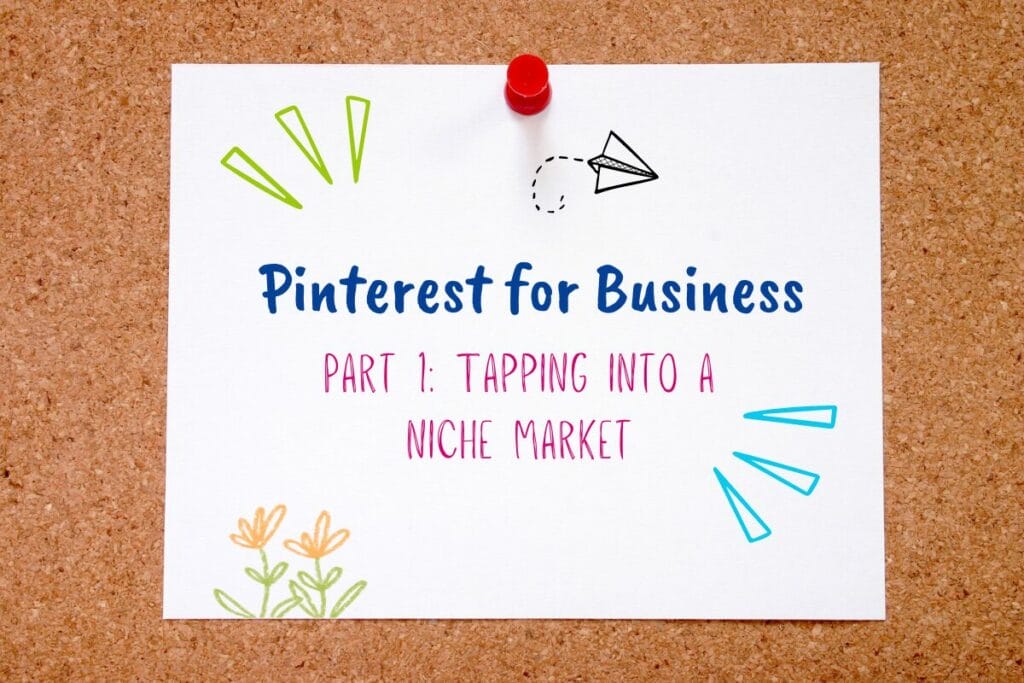
In today’s fast-paced digital landscape, standing out amidst the sea of content can be a daunting task for businesses of all sizes.
If your business has dabbled in social media, you probably know the usual suspects: Facebook, Instagram, X (formerly Twitter), and LinkedIn. You may have also heard of other social networks, all claiming to be the “next big thing” in social media.
Given the costs of maintaining a professional presence on social media, knowing what makes sense from a cost/benefit perspective is challenging – especially if your expertise is in window shades or waste management, rather than technology and social media marketing.
Despite being around for quite some time, another social media platform, Pinterest, remains relevant in the ever-evolving digital landscape.
What’s So Special About Pinterest?
Since its inception, Pinterest has evolved from a platform primarily focused on DIY projects and recipe sharing to a dynamic visual discovery engine with over 400 million active users worldwide. Its longevity is a testament to its enduring appeal and adaptability, as it continuously updates its features and algorithms to meet the changing needs of both users and businesses.
Now, Pinterest offers a unique space for brands to showcase their products and connect with their target audience in meaningful ways.
If you’re not sold on Pinterest as a solid social media marketing strategy for your business, you’re wise to be skeptical. Having visual content at the ready or considering the average Pinner — a female between the ages of 25 and 54 — to be your target demographic are the best use cases for Pinterest marketing.
Yet, companies of all sizes are joining Pinterest in droves, thanks to the option to create specific business pages for advertising on Pinterest. And guess what? They’ve been successful at driving new traffic to their sites, engaging with customers, and increasing sales.
In this post, we’ll explore why Pinterest is a valuable marketing tool for your business and how you can leverage its features to effectively promote your products or services. From its engaged user base to its versatile advertising options, we’ll delve into the reasons why Pinterest deserves a prime spot in your marketing strategy arsenal.
So, grab your virtual pinboard and let’s uncover the untapped potential of Pinterest for your business.
Pinterest 101
Ever run across something on the web you wanted to remember – a gift idea, a recipe, or a product you liked? Keeping track of these incidental finds by emailing the links to yourself or bookmarking the websites can be cumbersome – and odds are, they’ll wind up forgotten.
Now imagine running across the same item you want to remember, clicking one button, and instantly saving the item in a place you can always find it. That’s the concept behind Pinterest – you can post, or “pin” any image to a board.
Pinterest users (called “Pinners”) create multiple thematic boards to organize pins based on categories personally meaningful to them. For example, you might have boards for “books to read,” “products I love,” or “home projects.”
The boards you create on Pinterest can be viewed by other Pinners, and you can view others’ boards and “repin” items you like to boards of your own. This concept is key for businesses, because a popular pin can bring thousands of visitors to your site.
What Pinterest Isn’t
Although Pinterest is a social network, it isn’t a replica of Facebook or other social media sites that focus on individual people.
Instead, it’s based on images of specific things that people find interesting. Rather than building social connections, your aim is to build your visual collections, find inspiration from other Pinners, and share images of interest – and the pages they link to – with others.
Pinterest also doesn’t work like traditional social media advertising. Because ads are shown in the form of pins, their marketing is closer to Native Advertising than Social Media Marketing, having a more organic appearance. Targeted ads are shown only to users that have an interest in those products and services, making it a valuable B2C marketing tool.
Advertising on Pinterest for Business: Top 6 Strategies
Since users don’t like to feel they are being pandered to, it’s important to think creatively about ways to use Pinterest to drive traffic to your site. Here are our top 5 strategies to employ when getting started:
- Think Like Your Customers. What is fascinating in your field that would also interest your customers? If you’re hard-pressed to think of relevant pinnable images, consider exciting news, tips, and products from other websites alongside images that link to your own page.
- Look for Pinspiration. The best way to learn how to pin effectively is to consult Pinterest itself. Check out Pinterest’s examples of Pinterest for Business for tips.
- Try different pin formats. Pinterest now has pin carousels for multiple images and videos to show off products and demonstrate processes. Play around with formats to see what works for your business.
- Follow Heavy Hitters. Following fellow Pinners – especially those who have lots of followers themselves – increases the odds that they’ll follow you back and repin your content, driving traffic to your site.
- Engage Your Audience. Consider planning regular, themed pins, challenging your customers to pin items on a preselected theme, or holding Pinterest contests. Keeping your content fresh and pinning on a regular basis is essential to attracting followers and steady traffic to your site.
- Link Up. Make sure to link your Pinterest account to your Facebook and Twitter profiles to maximize followers and traffic. Any blog posts from your business should also feature a Pinterest button so that readers can easily repin the content (and make sure that each blog post has at least one image to pin)!
Pinterest Marketing Don’ts
Get started on the right foot by avoiding these Pinterest gaffes:
- Don’t copy your website. Pinterest should be used for original content that supplements your website, not a replica of your site content itself. If your pinboards match the information on your website, potential customers will get bored.
- Don’t copy your other social media posts. Though there are similarities, Pinterest attracts a different kind of audience than Facebook or LinkedIn. Create pins that work well with Pinterest’s visual medium.
- Don’t use Pinterest as a classified ad. Your pins should be focused on your customers’ lifestyles, not your products. How likely would you be to view and repin a blatant advertisement?
- Don’t forget to credit your sources. If you’re repinning something, it’s proper Pinterest etiquette to note the original Pinner in your description.
This is Part 1 of a two-part series on marketing with Pinterest. Continue your Pinterest marketing journey with Part 2.
About the Author

Mandie joined Top Of The List in 2018 and has a degree in Web Development. She lives in Grand Rapids, MI with her dog Winnie.

Nicole Vesota
Vice President & Project ManagerNicole has been working in online marketing since 2007 when she joined Top Of The List. She loves creative endeavors and spending time with her daughter.




